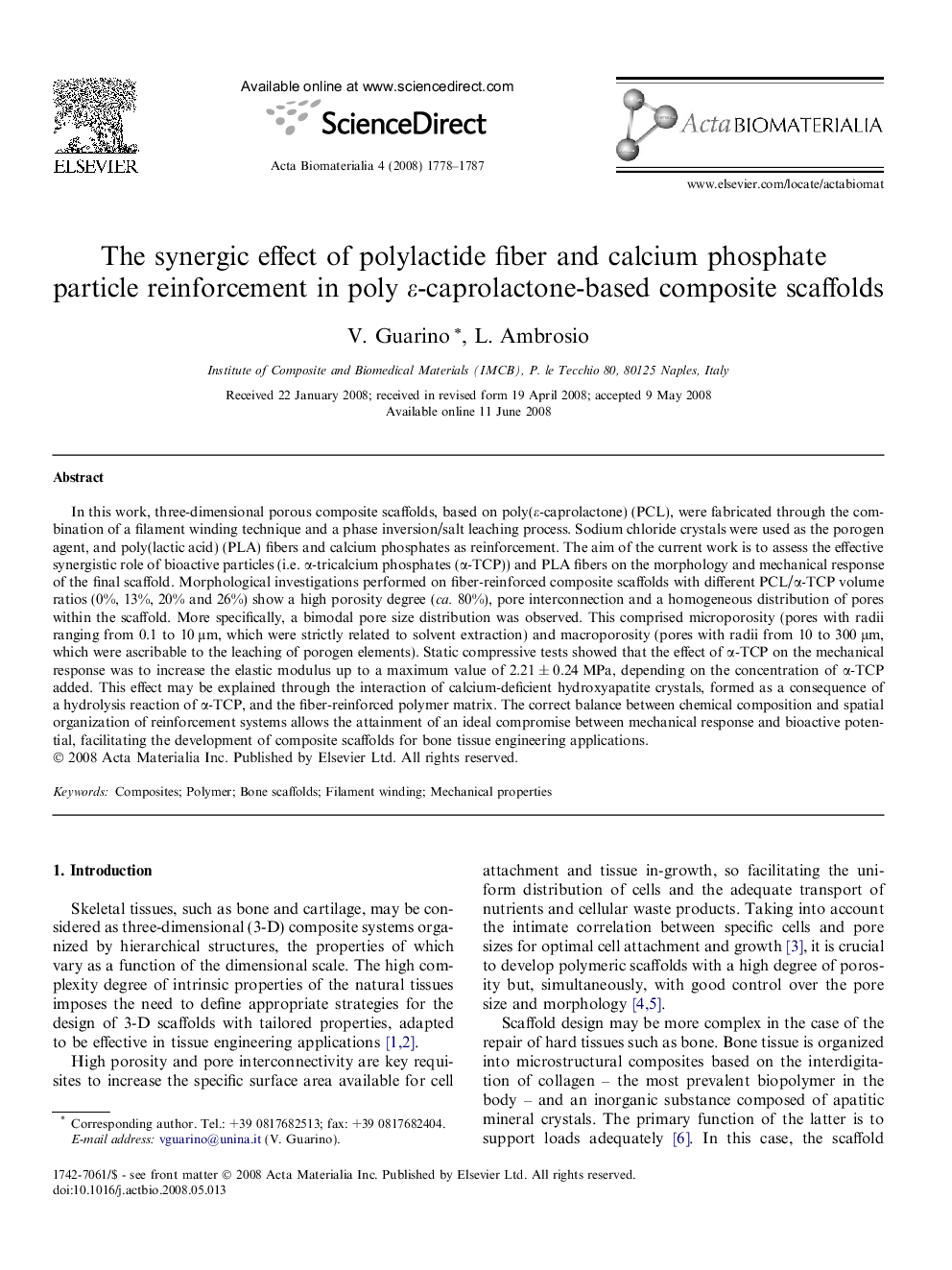| Article ID | Journal | Published Year | Pages | File Type |
|---|---|---|---|---|
| 1751 | Acta Biomaterialia | 2008 | 10 Pages |
In this work, three-dimensional porous composite scaffolds, based on poly(ε-caprolactone) (PCL), were fabricated through the combination of a filament winding technique and a phase inversion/salt leaching process. Sodium chloride crystals were used as the porogen agent, and poly(lactic acid) (PLA) fibers and calcium phosphates as reinforcement. The aim of the current work is to assess the effective synergistic role of bioactive particles (i.e. α-tricalcium phosphates (α-TCP)) and PLA fibers on the morphology and mechanical response of the final scaffold. Morphological investigations performed on fiber-reinforced composite scaffolds with different PCL/α-TCP volume ratios (0%, 13%, 20% and 26%) show a high porosity degree (ca. 80%), pore interconnection and a homogeneous distribution of pores within the scaffold. More specifically, a bimodal pore size distribution was observed. This comprised microporosity (pores with radii ranging from 0.1 to 10 μm, which were strictly related to solvent extraction) and macroporosity (pores with radii from 10 to 300 μm, which were ascribable to the leaching of porogen elements). Static compressive tests showed that the effect of α-TCP on the mechanical response was to increase the elastic modulus up to a maximum value of 2.21 ± 0.24 MPa, depending on the concentration of α-TCP added. This effect may be explained through the interaction of calcium-deficient hydroxyapatite crystals, formed as a consequence of a hydrolysis reaction of α-TCP, and the fiber-reinforced polymer matrix. The correct balance between chemical composition and spatial organization of reinforcement systems allows the attainment of an ideal compromise between mechanical response and bioactive potential, facilitating the development of composite scaffolds for bone tissue engineering applications.
